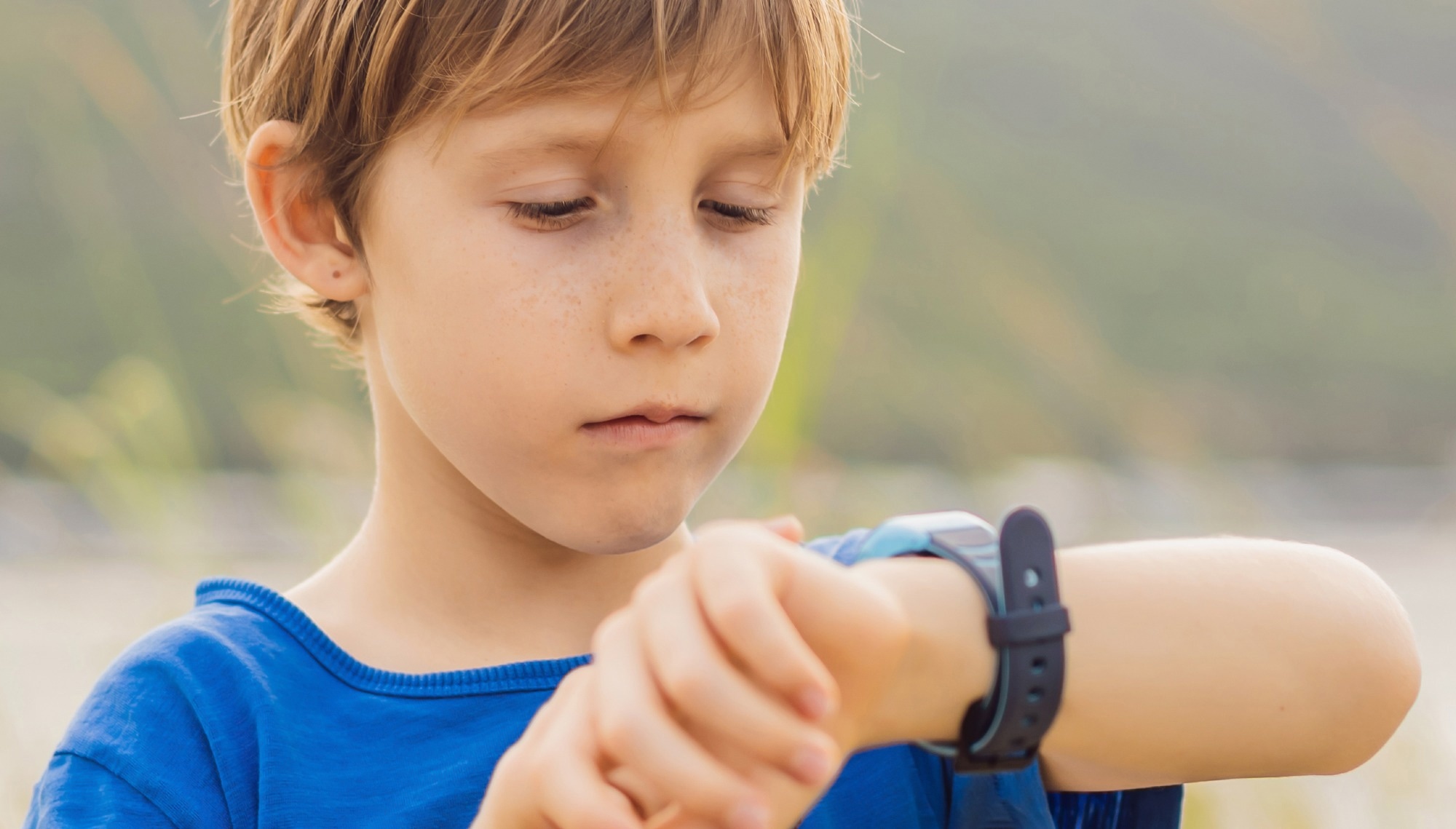A large umbrella review finds that app- and wearable-based interventions can spark small yet meaningful improvements in kids’ activity, diet, and weight, offering scalable digital pathways to healthier habits.

Review: Lifestyle eHealth and mHealth Interventions for Children and Adolescents: Systematic Umbrella Review and Meta–Meta-Analysis. Image Credit: Elizaveta Galitckaia / Shutterstock
In a recent study published in the journal Journal of Medical Internet Research, researchers evaluated whether electronic health (eHealth) and mobile health (mHealth) interventions improve movement, diet, sleep, and weight outcomes in children and adolescents.
Background
Many children miss daily movement and diet goals, a pattern tied to weaker grades, low mood, and future disease. eHealth and mHealth tools meet youth on phones, wearables, and the web, delivering coaching, games, reminders, and support. They can raise moderate to vigorous physical activity (MVPA), trim screen time, increase fruit and vegetable intake, and may target sleep, although current evidence in youth remains limited and inconclusive.
Because small changes compound, nudges could scale through classrooms and clinics. Yet evidence is scattered across randomized controlled trials (RCTs) and reviews of uneven quality.
Further research should specify which features work best, for whom, and for how long.
About the study
The researchers conducted a preregistered overview of reviews using the Preferred Reporting Items for Systematic Reviews and Meta-Analyses (PRISMA) framework and a Population, Intervention, Comparison, Outcomes, and Study design (PICOS) strategy.
Eligible sources were systematic reviews and meta-analyses including mostly RCTs of digital interventions targeting physical activity, sedentary behavior, sleep, or diet in participants younger than 18 years.
Interventions included websites, apps, Short Message Service (SMS) text messaging, wearables, exergames, or mixed eHealth and mHealth approaches, compared with no intervention, usual care, sham, or attention controls.
Researchers independently screened records, extracted data, and rated review quality using A Measurement Tool to Assess Systematic Reviews-2 (AMSTAR-2).
To summarize effects, the team pooled standardized mean differences (SMDs) and, where reported, mean differences (MDs) with 95% confidence intervals under random-effects models, quantified heterogeneity (I²), and inspected funnel plots for publication bias.
They calculated the Corrected Covered Area (CCA) to gauge overlap between trials across reviews and graded evidence levels and recommendation strength. Subgroup analyses assessed age (<13 versus ≥13 years), intervention duration (<8, 8–11, and ≥12 weeks), delivery mode (app-only, web-only, SMS-only, wearables, exergames, or mixed), and AMSTAR-2 rating.
Study results
Across 25 systematic reviews synthesizing 440 randomized trials and 133,501 participants, digital interventions produced small, favorable effects for movement, diet, and weight. MVPA increased (SMD 0.18, 95% confidence interval 0.09–0.27), and total physical activity also rose (SMD 0.24, 0.13–0.35).
Dietary changes were modest, like lower fat intake (SMD −0.10, 0.02–0.18) and slightly higher fruit and vegetable intake (SMD 0.11, ~0.00–0.22).
Weight-related outcomes improved: Body Mass Index (BMI) decreased (SMD −0.19; MD −0.22 kg/m²), and body weight declined (SMD −0.15; MD −0.99 kg). Body fat percentage also decreased (MD −0.47%), consistent with modest improvements in adiposity.
Positive SMDs indicate effects favoring intervention; for BMI this corresponds to a reduction. Sedentary behavior findings diverged by metric: pooled SMDs were nonsignificant with high heterogeneity, but MDs suggested daily reductions in sedentary time (about −24 minutes) and screen time (about −22 minutes).
Sleep duration showed no meaningful change based on sparse data from low-quality reviews and heterogeneous measures.
Design features shaped outcomes, as short programs under eight weeks yielded larger gains in MVPA than longer ones (roughly SMD 0.86 vs 0.19), whereas programs lasting twelve weeks or more better reduced BMI (about SMD 0.46 vs −0.07), a pattern consistent with rapid motivational boosts for activity and slower physiology for weight change.
By delivery mode, wearable-only programs produced the largest effects on sedentary time (SMD near 0.97), suggesting real-time prompts can displace sitting.
App-only approaches performed best for BMI (SMD near 0.78 versus 0.00–0.31 for other modes), likely reflecting frequent self-monitoring, tailored feedback, and gamified goals that support weight management.
No consistent differences by age group (<13 vs ≥13 years) emerged for MVPA, total activity, BMI, or sedentary behavior.
Most included reviews were rated low or critically low on AMSTAR-2, which may inflate effects in some domains, particularly sedentary behavior, and funnel-plot asymmetry for activity outcomes suggested missing small negative studies; true effects may therefore be slightly smaller. Even so, statistical heterogeneity was low to moderate for several key outcomes, and overlap across reviews was slight by the CCA, supporting accuracy of aggregated signals.
Grades of recommendation were generally B for MVPA, total activity, diet, and weight outcomes, and C for sedentary behavior and sleep, reflecting moderate-to-low confidence in the evidence base.
From a public-health perspective, even small per-child gains can accumulate: nudging just 10–20 extra minutes of movement, a few more daily servings of produce, or modest weight improvements across thousands of students could shift school-wide risk profiles.
Because the interventions leverage existing devices, they may be especially useful in settings with limited staff time, enabling teachers, pediatricians, and parents to reinforce healthy routines between visits.
The absence of clear sleep benefits and mixed sedentary results point to targets for next-generation designs, including habit-friendly bedtime routines, parental co-engagement, and environment-level cues to break up sitting.
Conclusions
Digital health can help families make healthier defaults. In children and adolescents, eHealth and mHealth tools produce small but consistent improvements in physical activity, diet, and weight, with unclear effects on sedentary behavior and little impact on sleep.
Short bursts seem best for activity, while longer programs help weight. Prioritizing app-based self-monitoring and wearables, embedding programs in schools and primary care, and ensuring equitable access may amplify benefits.
Journal reference:
- Singh, B., Ahmed, M., Staiano, A., Vasiloglou, M., Gough, C., Petersen, J., Yin, Z., Vandelanotte, C., Kracht, C., Fiedler, J., Timm, I., Dallinga, J., Sivakumar, B., Baumann, H., Huong, C., Wunsch, K., Suárez-Reyes, M., Schoeppe, S., Button, A., Spring, K., & Maher, C. (2025). Lifestyle eHealth and mHealth Interventions for Children and Adolescents: Systematic Umbrella Review and Meta–Meta-Analysis. J Med Internet Res, 27. DOI: 10.2196/69065, https://www.jmir.org/2025/1/e69065